| 08:30 |
Registration, Tea/Coffee & Exhibition
|
| 09:00 to 09:10 |
President's Introduction
Abid Faqir 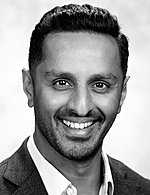 Abid Faqir graduated from the Glasgow Dental School before undertaking his Diploma of Membership of the Faculty of Dental Surgery in Edinburgh and a Masters Degree at Glasgow University. He has further gained a Diploma in Implant Dentistry from the Royal College of Edinburgh. He has had extensive training both in the UK and overseas in the field of implantology. Abid Faqir graduated from the Glasgow Dental School before undertaking his Diploma of Membership of the Faculty of Dental Surgery in Edinburgh and a Masters Degree at Glasgow University. He has further gained a Diploma in Implant Dentistry from the Royal College of Edinburgh. He has had extensive training both in the UK and overseas in the field of implantology.
Abid limits his practice to the treatment and the management of complex cases, including digital planning. He has a particular interest in immediate loading and soft tissue grafting.
Abid is currently the President of the Association of Dental Implantology. He has also been appointed in the past to the editorial board for the publication Implant Dentistry and as a committee member of British Society of Oral Implantology.
Outside dentistry he has served on the board as a trustee for the Riverside Museum Appeal and is currently a board member of the Glasgow Children’s Charity.
Qualifications: BDS(Glasg) MFDS RCS(Edin) MSc(MedSci) Dip Imp Dent (RCS Edin) |
| 09:10 to 09:35 |
A Dual Guide Technique For Improving Outcomes In Computer Assisted Surgery Dentists practising dental implantology are increasingly recognising the benefit of using a digital workflow to optimise outcomes for their patients. Computer assisted surgery is and integral part of this workflow and Craig will explain the potential sources of accuracy in this technique and demonstrate how these can be overcome using a novel approach.
Craig Parker 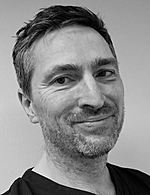 Craig Parker’s special interest is in digital workflow in dental implantology: using ultra-precision digital treatment planning, cone beam CT imaging, digital intra-oral scanning and CAD-CAM restoration to maximize hard and soft tissue aesthetics and functionality. He lectures regularly nationally and internationally. Craig has been involved in surgical dentistry for over 25 years. He runs a private referral practice in Leeds, UK, where the majority of his work is in implant dentistry. He has been actively involved in the Faculty of General Dental Practice (UK) at the Royal College of Surgeons where he was on the board of examiners for over 10 years and he was elected to the national board where he served for 3 years. He lectures regularly internationally on digital and implant dentistry. Craig is Past President of the Association of Dental Implantology (UK) where he served on the board for 8 years and has been awarded honorary membership. Craig Parker’s special interest is in digital workflow in dental implantology: using ultra-precision digital treatment planning, cone beam CT imaging, digital intra-oral scanning and CAD-CAM restoration to maximize hard and soft tissue aesthetics and functionality. He lectures regularly nationally and internationally. Craig has been involved in surgical dentistry for over 25 years. He runs a private referral practice in Leeds, UK, where the majority of his work is in implant dentistry. He has been actively involved in the Faculty of General Dental Practice (UK) at the Royal College of Surgeons where he was on the board of examiners for over 10 years and he was elected to the national board where he served for 3 years. He lectures regularly internationally on digital and implant dentistry. Craig is Past President of the Association of Dental Implantology (UK) where he served on the board for 8 years and has been awarded honorary membership.
Qualifications: BChD MFGDP(UK) DPDS |
| 09:35 to 10:00 |
The Use Of Ultra-Wide Dental Implants For Molar Tooth Replacement 10 years ago, I presented a lecture to the ADI Members’ Forum titled "Immediate implant placement in molar sockets – a dynamic new technique". Since then, I have been involved in research which resulted in several scientific publications on this topic. This presentation will briefly review modifications to the technique described in 2009 and explain how ultra-wide dental implants relate to human molar socket anatomy. It will report on the findings of several retrospective studies as well as a prospective study that contribute to our understanding of this treatment modality. In modern day implantology, ultra-wide dental implants (wider than 6mm) can be a valuable tool to make implant placement possible at the time of molar tooth removal.
André C Hattingh 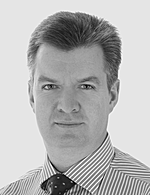 André Hattingh received his BChD degree from the University of Pretoria in 1991 and completed his postgraduate training in Periodontology and Oral Medicine from 1996 to 2000, at the same faculty. He received his Masters degree with distinction and is currently completing a PhD at Ghent University in Belgium, where he is involved in research related to ultra-wide diameter dental implants. He works full time in his private practice as a periodontist in Sevenoaks, Kent, United Kingdom. André Hattingh received his BChD degree from the University of Pretoria in 1991 and completed his postgraduate training in Periodontology and Oral Medicine from 1996 to 2000, at the same faculty. He received his Masters degree with distinction and is currently completing a PhD at Ghent University in Belgium, where he is involved in research related to ultra-wide diameter dental implants. He works full time in his private practice as a periodontist in Sevenoaks, Kent, United Kingdom.
Qualifications: BChD (Pret) MChD (Periodontics and Oral Medicine) |
| 10:00 to 10:25 |
When Might Single Tooth Dental Implants Support A Cantilever? Tooth cantilevers using splinted dental implants have been used for decades for edentulous patients, but in partially dentate patients the 'two teeth for one implant option' is often particularly financially attractive. However the implant system used, together with biomechanical, occlusal and anatomical factors make treatment planning important in such cases. These considerations will be briefly discussed in conjunction with presentation of a long term clinical audit.
Stephen E B Jones 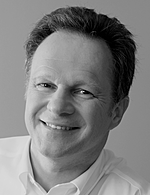 Stephen E B Jones qualified in 1983 at University College London and after completing hospital jobs and some postgraduate studies went into private practice in Newbury in 1988. He was one of the founder Members of the FGDP(UK) in 1992 and was an Examiner for the MGDS at the Royal College of Surgeons in London between 1996-2002. He became a Specialist in Prosthodontics in 1999 and has combined his referral practice with teaching undergraduates, postgraduates and GDPs on Section 63, Implant Diploma and private courses over the years. Stephen has been a member of the ADI since 1992 and a Trustee since 2015 and in the last two years he has served as Treasurer. He is also a member of BAAD, EAO and BSRD and has enjoyed observing the evolution of dental implantology over the course of his career. Stephen E B Jones qualified in 1983 at University College London and after completing hospital jobs and some postgraduate studies went into private practice in Newbury in 1988. He was one of the founder Members of the FGDP(UK) in 1992 and was an Examiner for the MGDS at the Royal College of Surgeons in London between 1996-2002. He became a Specialist in Prosthodontics in 1999 and has combined his referral practice with teaching undergraduates, postgraduates and GDPs on Section 63, Implant Diploma and private courses over the years. Stephen has been a member of the ADI since 1992 and a Trustee since 2015 and in the last two years he has served as Treasurer. He is also a member of BAAD, EAO and BSRD and has enjoyed observing the evolution of dental implantology over the course of his career.
Qualifications: BDS MSc MGDS MRD |
| 10:25 to 10:40 |
Panel Discussion
|
| 10:40 to 11:00 |
Tea/Coffee & Exhibition
|
| 11:25 to 11:25 |
Dentistry Is Not A Game Of Perfect. The Integrated Abutment Crown. 10 Years And Still Learning To Love It In 2007, a new concept for the restoration of single crowns was developed. The integrated abutment crown uses a hybrid composite material bonded directly to an abutment and secured to the implant by a locking taper. This assembly becomes a single piece, with no screw, no cement and no micro leakage. If this works implant dentistry might become much simpler. Single, unsplinted crowns with no micro movement and no loose or broken screws. No cement to irritate the tissues and no stinky bugs inside the assembled component parts. Geoff will show how this concept has developed, how he has used it, what are the upsides, the downsides and how it compares with the traditional approach using more orthodox materials. All this together with some interesting observations and techniques that can simplify your general dentistry. Stuff that works.
Geoffrey Pullen 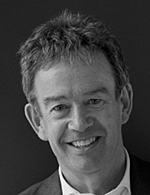 Geoffrey Pullen qualified as a dentist from Kings College Hospital in 1978 and graduated with a DDS from the University of Southern California in 1981. He set up his own exclusively private practice in 1984 starting with a handful of patients. He has been involved in implant dentistry for 30 years - placing, restoring, teaching, mentoring, lecturing and demonstrating the surgical and restorative aspects. In 1997 he was introduced to the Bicon system and has used that device almost exclusively ever since. He has lectured in the UK, Europe, USA, India and Russia on implantology, treatment planning and peri-implantitis. He lectures on the Royal College of Surgeons diploma course. He is a director of Bicon Marketing UK and is a Past President of the American Dental Society of London and the American Dental Society of Europe - the oldest dental society in the world. Geoffrey Pullen qualified as a dentist from Kings College Hospital in 1978 and graduated with a DDS from the University of Southern California in 1981. He set up his own exclusively private practice in 1984 starting with a handful of patients. He has been involved in implant dentistry for 30 years - placing, restoring, teaching, mentoring, lecturing and demonstrating the surgical and restorative aspects. In 1997 he was introduced to the Bicon system and has used that device almost exclusively ever since. He has lectured in the UK, Europe, USA, India and Russia on implantology, treatment planning and peri-implantitis. He lectures on the Royal College of Surgeons diploma course. He is a director of Bicon Marketing UK and is a Past President of the American Dental Society of London and the American Dental Society of Europe - the oldest dental society in the world.
Qualifications: BDS DDS |
| 11:50 to 12:15 |
Dentist And Dental Technician Collaboration - Communication Is The Key To Success Implant crowns are the most sophisticated dental treatments in every day practice. I believe that if we want to provide an aesthetic and functionable implant case we must make sure we all understand what is required to achieve the best final outcome. There are many factors involved for the optimal restoration: the correct material and design of the final abutment, awareness of the bone around the implant fixture for the longevity of the crown, but also pink aesthetics, shade and the best material for the best aesthetics of the crown. Good initial communication between the dentist and the technician, and then ongoing communication between the technician and the dentist is the key to success. I will share my experience with the implant cases as a dental technician - what information, pictures, X-rays and shade information is needed from the dentist to deliver aesthetic and functionable restorations.
Petr Mysicka 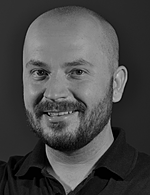 In 2005 Petr Mysicka graduated as a Dental Technician in the Czech Republic. He spent seven years in the Czech Republic working as a Dental Technician developing his dental skills and techniques. In 2013 Petr relocated to the UK to further develop his technical skills and gain more experience in aesthetic dentistry. Shortly after arriving to the UK the opportunity to open his own dental laboratory ‘PM Dental Studio’ arose and Petr and the team have never looked back. Petr has worked closely with Ivoclar Vivadent and in 2014 he was selected to become an Opinion Leader within dental technology. In the time PM Dental Studio has been trading they have the accolade of winning the Aesthetic Dentistry Awards 2014 - 2017. Recently Petr has spent over 2 years establishing the eLAB system in his laboratory. In 2018 Petr became an official eLAB Instructor. In 2005 Petr Mysicka graduated as a Dental Technician in the Czech Republic. He spent seven years in the Czech Republic working as a Dental Technician developing his dental skills and techniques. In 2013 Petr relocated to the UK to further develop his technical skills and gain more experience in aesthetic dentistry. Shortly after arriving to the UK the opportunity to open his own dental laboratory ‘PM Dental Studio’ arose and Petr and the team have never looked back. Petr has worked closely with Ivoclar Vivadent and in 2014 he was selected to become an Opinion Leader within dental technology. In the time PM Dental Studio has been trading they have the accolade of winning the Aesthetic Dentistry Awards 2014 - 2017. Recently Petr has spent over 2 years establishing the eLAB system in his laboratory. In 2018 Petr became an official eLAB Instructor.
|
| 12:15 to 12:30 |
Panel Discussion
|
| 12:30 to 13:15 |
Lunch & Exhibition
|
| 13:15 to 13:45 |
AGM (in Room A)
|
| 13:45 to 14:10 |
Evidence Based Surgical Risk Management Strategies And Treatment Options For The Reconstruction Of The Atrophic Mandible Collateral damage to vital structures occurs if adequate clearance is not allowed when placing an implant near vital structures in the mandible. Complications can be life changing or even life threatening and often result in medico-legal complaints or disciplinary sanctions. In this presentation, evidence-based surgical risk management strategies for implant surgery in the mandible based on protocols published by Ucer et al (2017) and Yilmaz, Ucer, Scher, Suzuki and Renton (2017) will be summarised. Surgical techniques to reduce the risk of collateral damage to vital structures, in the atrophic mandible, including the use of Bone Ring technique, shorter implants, vertical bone grafting, the nerve repositioning surgery and 3D guided-surgical navigation techniques will be presented.
Cemal Ucer 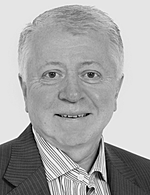 Cemal Ucer established a hospital based oral surgery and implantology referral centre in 1995. He has an MSc in guided bone regeneration and osteopromotion, and a PhD in clinical and laboratory studies investigating the factors affecting the success of implant treatment in iliac grafts. Cemal Ucer established a hospital based oral surgery and implantology referral centre in 1995. He has an MSc in guided bone regeneration and osteopromotion, and a PhD in clinical and laboratory studies investigating the factors affecting the success of implant treatment in iliac grafts.
His current clinical and research interests include pre-prosthetic & reconstructive bone surgery, zygomatic and customised oral implant rehabilitation of severely atrophic cases.
Cemal is a Fellow of the International Team for Implantology (ITI). He is a director of the ICE Postgraduate Dental Institute in Manchester and Clinical Lead of the MSc programme in Dental Implantology at University of Salford. He is a fellow of the faculty of Dental Trainers at RCS Ed and a member of the Faculty of Examiners of the Royal College of Surgeons of Edinburgh in Implant Dentistry. Cemal is a past president of Association of Dental Implantology.
Qualifications: BDS MSc PhD FDTF Ed RCS Ed Specialist Oral Surgeon, Professor of Dental Implantology (University of Salford) |
| 14:10 to 14:35 |
Antibiotic Prophylaxis During Dental Implant Placements In The UK A national survey of implant-placing dentists was carried out in 2018 to establish the use of antibiotic prophylaxis for dental implant surgery in the UK. A picture will be painted of current antibiotic use, discussing the most popular protocols, trends in prescribing habits and variations relating to training, experience, procedures etc. The UK findings will also be compared with those from other countries. The evidence for antibiotic use will be explored and the presence and appetite for national or international guidelines discussed.
Robert Williams 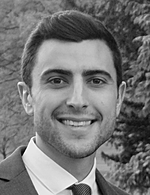 Robert Williams qualified from Newcastle University in 2012 with merit in both clinical and academic dentistry. After his Foundation year he completed Dental Core Training followed by Clinical Fellow and Specialty Doctor posts in both Oral and Maxillofacial Surgery and Oral Surgery units in hospitals in the northeast and northwest of England. In 2014 he achieved Membership of the Royal College of Surgeons of Edinburgh and recently attained a Master of Science in Dental Implantology with distinction. Robert Williams qualified from Newcastle University in 2012 with merit in both clinical and academic dentistry. After his Foundation year he completed Dental Core Training followed by Clinical Fellow and Specialty Doctor posts in both Oral and Maxillofacial Surgery and Oral Surgery units in hospitals in the northeast and northwest of England. In 2014 he achieved Membership of the Royal College of Surgeons of Edinburgh and recently attained a Master of Science in Dental Implantology with distinction.
As well as working as a Specialty Registrar in Oral Surgery at Arrowe Park Hospital, Robbie practices general dentistry in primary care, with a special interest in oral surgery and dental implantology.
Qualifications: BDS MFDS RCS(Ed) MSc (Dent Imp) |
| 14:35 to 15:00 |
Minimally Invasive Sinus Lifts With 'Safety' Entry System And Validation Of An Intact Membrane: A Dentist's Experience Has the day of a validated crestal approach sinus lift arrived? Does this make it a ‘safe’ minimally invasive option? Rob Nichols talks about his experience of using a system that aims to provide both a ‘safety’ entry system into the sinus and a real-time means of validating that the Schneiderian membrane is intact, prior to placement of graft material with or without simultaneous implant placement.
He introduces the advantages and disadvantages of crestal approach, stating that the main difficulty is a known 20% perforation of the membrane and that it is a blind procedure. He then reviews the Jeder-System, a pressure entry system that provides validation of a successful membrane lift. Patient responses to this procedure have been very positive. The literature reports a successful lift rate of 95%. In the failed cases, a switch to a conventional lateral approach lift was instigated.
Robert Nichols 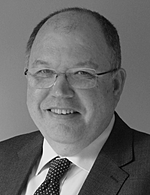 Robert Nichols is the practice principal and owner of Cottingham Dental Practice in Cottingham, East Yorkshire, where he has run a successful referral service in dental implantology and endodontology for ten years. An MSc in Endodontology in 2013 led to a better understanding of endodontic success rates and limitations; he has been placing dental implants since 2002 and completed a PgCert in Dental Implantology in 2015. His approach to working with patients is about the balance of cost-effective and predictable solutions with the aim of preserving effective dental function. Robert Nichols is the practice principal and owner of Cottingham Dental Practice in Cottingham, East Yorkshire, where he has run a successful referral service in dental implantology and endodontology for ten years. An MSc in Endodontology in 2013 led to a better understanding of endodontic success rates and limitations; he has been placing dental implants since 2002 and completed a PgCert in Dental Implantology in 2015. His approach to working with patients is about the balance of cost-effective and predictable solutions with the aim of preserving effective dental function.
The microscope-centred dentistry which has developed out of his endodontic practice has led to an interest in minimally invasive procedures. He has continued to develop his interests with extensive postgraduate study in the UK and abroad and an appreciation of evolving techniques and equipment. He is committed to accessing methods of procedural validation during dental implant surgery.
Qualifications: BDS PgDip Dental Implantology MSc Endodontology |
| 15:00 to 15:15 |
Panel Discussion
|
| 15:15 to 15:30 |
Tea/Coffee & Exhibition
|
| 15:30 to 15:55 |
Accessory Neurovascular Canals In The Anterior Maxilla. A Potential Cause Of Intractable Post-Operative Pain Many cases of intractable pain following dental implant placement in the anterior maxilla have been reported. The availability of cone beam CT imaging has drawn attention to frequent anatomical variations in neurovascular supply to the anterior maxilla which may explain some cases of intractable pain.
It is possible that an implant may be placed in such a way that it compresses nerve tissue causing neuropathy and intractable post-operative pain. The same outcome has been reported when dental implants have been placed close to the inferior dental nerve.
Three cases are presented in which accessory neurovascular canals are present and dental implants are planned. There is a lack of evidence concerning the relevance of these accessory canals to dental implant placement in the anterior maxilla but it remains possible that injury to these structures may explain some cases of intractable pain.
Andrew Shelley 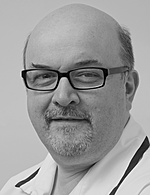 Andrew Shelley is a specialist in Prosthodontics and is in practice in Manchester, UK. He is a Fellow of the Royal Colleges of Surgeons of Edinburgh and of England. He was formerly Clinical Teacher at the School of Dentistry, University of Manchester and was a founder tutor and examiner on the FGDP(UK)’s Diploma in Restorative Dentistry course. Andrew has a special interest in imaging and is a co-author of the FGDP(UK)’s ‘Selection Criteria in Dental Radiography’. He is also a co-author of the FGDP(UK)’s forthcoming publication ‘Standards in Implant Dentistry’. Andrew Shelley is a specialist in Prosthodontics and is in practice in Manchester, UK. He is a Fellow of the Royal Colleges of Surgeons of Edinburgh and of England. He was formerly Clinical Teacher at the School of Dentistry, University of Manchester and was a founder tutor and examiner on the FGDP(UK)’s Diploma in Restorative Dentistry course. Andrew has a special interest in imaging and is a co-author of the FGDP(UK)’s ‘Selection Criteria in Dental Radiography’. He is also a co-author of the FGDP(UK)’s forthcoming publication ‘Standards in Implant Dentistry’.
Qualifications: PhD MSc BDS MFGDP(UK) DPDS MGDS RCSEd FDS RCSEd FFGDP(UK) Dip Rest Dent RCS Eng |
| 15:55 to 16:20 |
Incidental Findings Of The Maxillary Sinus Found On CBCT. Refer Or Proceed? CBCT has almost become the standard radiographic investigation for implant treatment. The literature states between 35-65% of scans will show an incidental finding within the maxillary sinus.
The dilemma faced by many clinicians within the UK is the lack of evidence/guidelines and knowledge as to what warrants referral, and who, where and how best to refer.
The presentation will outline how to examine the maxillary sinus on a CBCT and discuss the thought process leading to a referral. Furthermore the presentation will look at the literature and discuss the influence of anatomical variants/incident findings and mucosal thickening when planning for sinus augmentation, and how to manage such cases.
The presentation will precede the subsequent presentation providing an ENT perspective on incidental observations. Collectively the lectures hope to provide clarity on which cases are safe to treat without prior investigation/intervention and those that require a referral.
Fezaan Gatrad 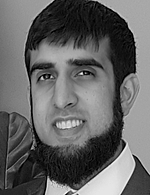 Having qualified in 2010 from King College London, Dr Fezaan Gatrad embarked on his implant training at The University of Warwick completing a Diploma in implant Dentistry in 2014. In 2016 he completed his Masters in Clinical Dentistry with distinction while also being presented the outstanding achievement award during his studies. He has been fortunate to have learnt from one of the best in the profession having sought the mentorship of Dr Guy Mclellan. In 2018 Fezaan went on to complete the Advanced Surgical Masters in Bone Regeneration taught by Professor Istvan Urban at the Urban Regeneration Institute, as well as spending time at the Malo Clinic. He currently owns a practice near St Albans, Hertfordshire as well as working as a traveling surgeon providing implant treatment. Having qualified in 2010 from King College London, Dr Fezaan Gatrad embarked on his implant training at The University of Warwick completing a Diploma in implant Dentistry in 2014. In 2016 he completed his Masters in Clinical Dentistry with distinction while also being presented the outstanding achievement award during his studies. He has been fortunate to have learnt from one of the best in the profession having sought the mentorship of Dr Guy Mclellan. In 2018 Fezaan went on to complete the Advanced Surgical Masters in Bone Regeneration taught by Professor Istvan Urban at the Urban Regeneration Institute, as well as spending time at the Malo Clinic. He currently owns a practice near St Albans, Hertfordshire as well as working as a traveling surgeon providing implant treatment.
Qualifications: BDS DiP Implant Dentistry (Warwick) MClinDent w/Distinction Implant Dentistry (BPP) |
| 16:20 to 16:45 |
Incidental Lesions of the Maxillary Sinus: An ENT Surgeon's Perspective Approximately 40-60% of cone-beam CT scans (CB-CT) performed prior to dental implantation can show an incidental abnormality (IA) in the maxillary sinus. In the absence of evidence based guidelines regarding the management of these, the dental implant surgeon and patient can be left confused regarding how best to proceed. Whilst some might continue with surgery, others might seek an ENT opinion. This can be time consuming and often unfruitful, resulting in a failure to perform implantation, either due to losses in follow up, or a decision to avoid surgery due to risks of sinus complications. Ultimately this can prevent patients that would benefit from dental implants receiving them. Here, we present the evidence from a joint dental and ENT perspective on the management of IAs. We also describe an evidence based management and referral algorithm for implant surgeons, so that patients can receive safe and effective treatment.
Stavros Eleftheriou 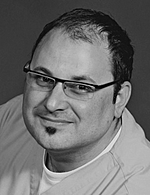 Stavros Eleftheriou graduated the Aristotle University of Thessaloniki, Greece in 1996. He then pursued further training in General Surgery and Oral & Maxillofacial Surgery in Israel, Germany, Cyprus, Austria and USA. In 2003, he became a specialist in Oral & Maxillofacial Surgery and established his practice in Cyprus, mainly focused on Implant Surgery, Reconstructive Surgery, Orthognathic and Cosmetic Facial Surgery. In 2015, he moved to the UK due to the dire financial situation in Cyprus. He is registered as a Specialist Oral Surgeon with the GDC. His main interest is Advanced Implant Dentistry and Oral Reconstructions using Autogenous grafts, Allografts and Blood Concentrates (A-PRF). He presents his work nationally and internationally and he also mentors dentists in implantology. He especially loves the challenge of taking on cases that are deemed impossible to treat with implants due to bone loss. Stavros Eleftheriou graduated the Aristotle University of Thessaloniki, Greece in 1996. He then pursued further training in General Surgery and Oral & Maxillofacial Surgery in Israel, Germany, Cyprus, Austria and USA. In 2003, he became a specialist in Oral & Maxillofacial Surgery and established his practice in Cyprus, mainly focused on Implant Surgery, Reconstructive Surgery, Orthognathic and Cosmetic Facial Surgery. In 2015, he moved to the UK due to the dire financial situation in Cyprus. He is registered as a Specialist Oral Surgeon with the GDC. His main interest is Advanced Implant Dentistry and Oral Reconstructions using Autogenous grafts, Allografts and Blood Concentrates (A-PRF). He presents his work nationally and internationally and he also mentors dentists in implantology. He especially loves the challenge of taking on cases that are deemed impossible to treat with implants due to bone loss.
Qualifications: DDS Specialist Oral Surgeon |
| 16:45 to 17:00 |
Panel Discussion
|
| 17:00 |
Close, followed by Drinks Reception
|